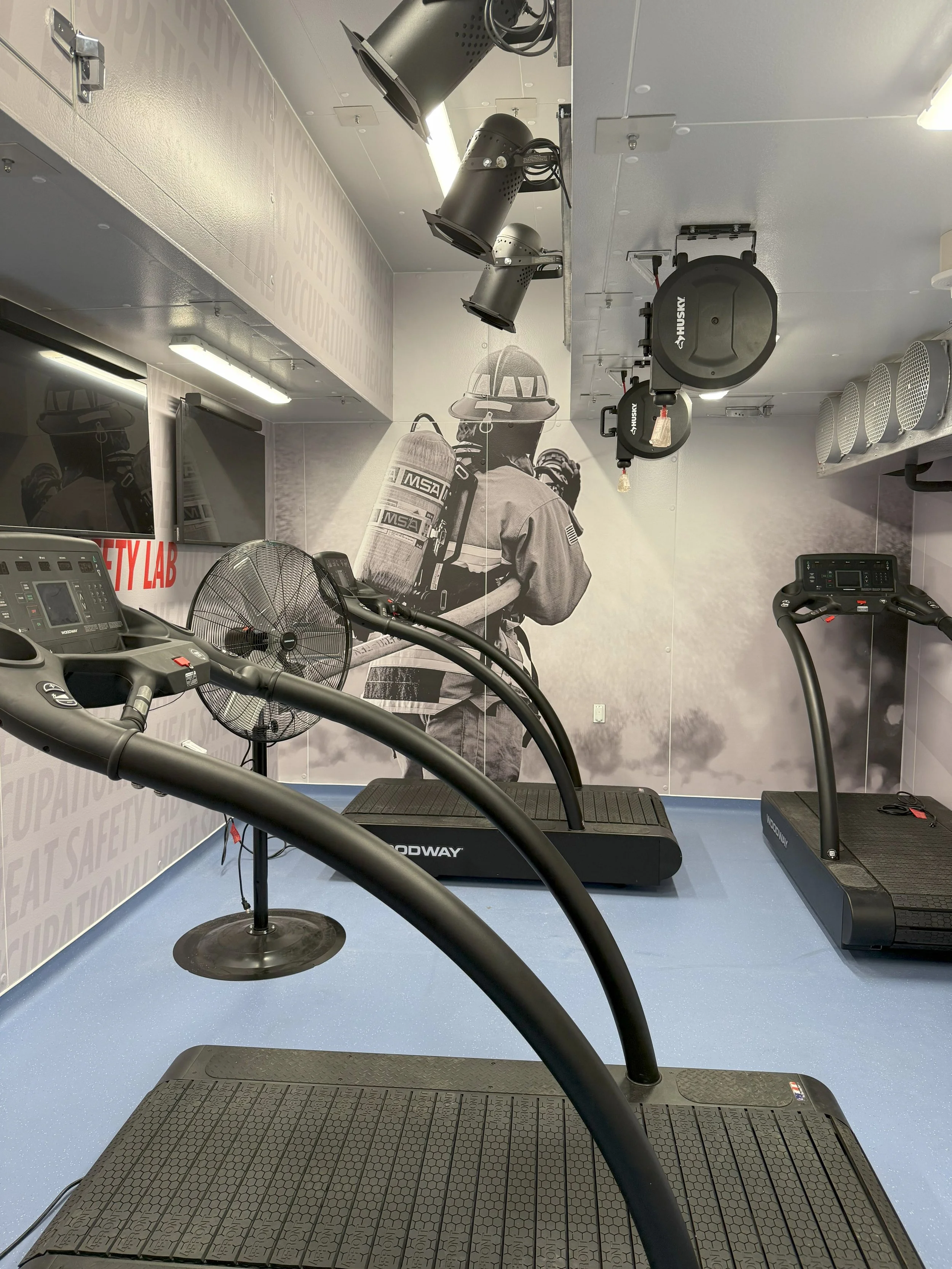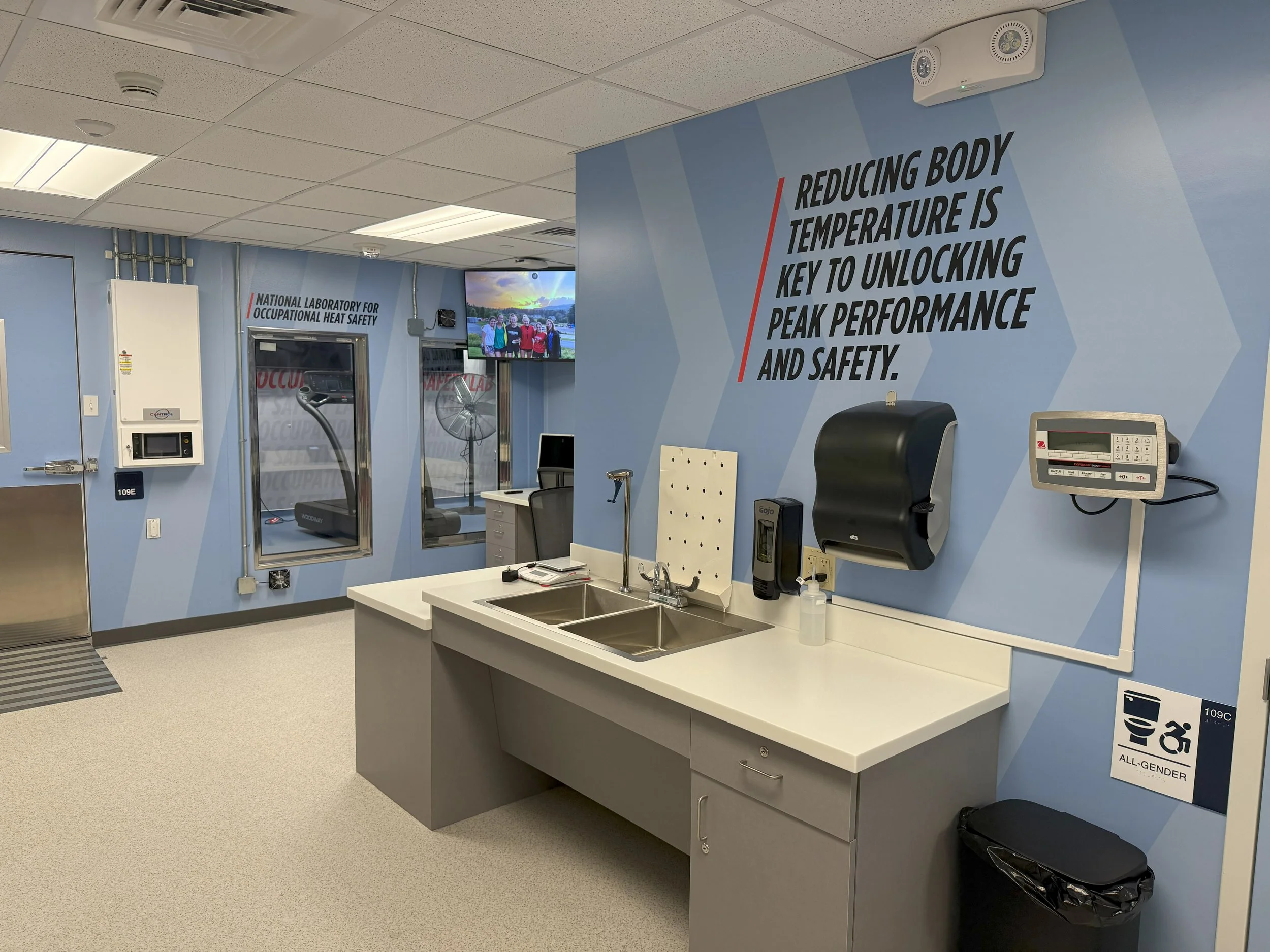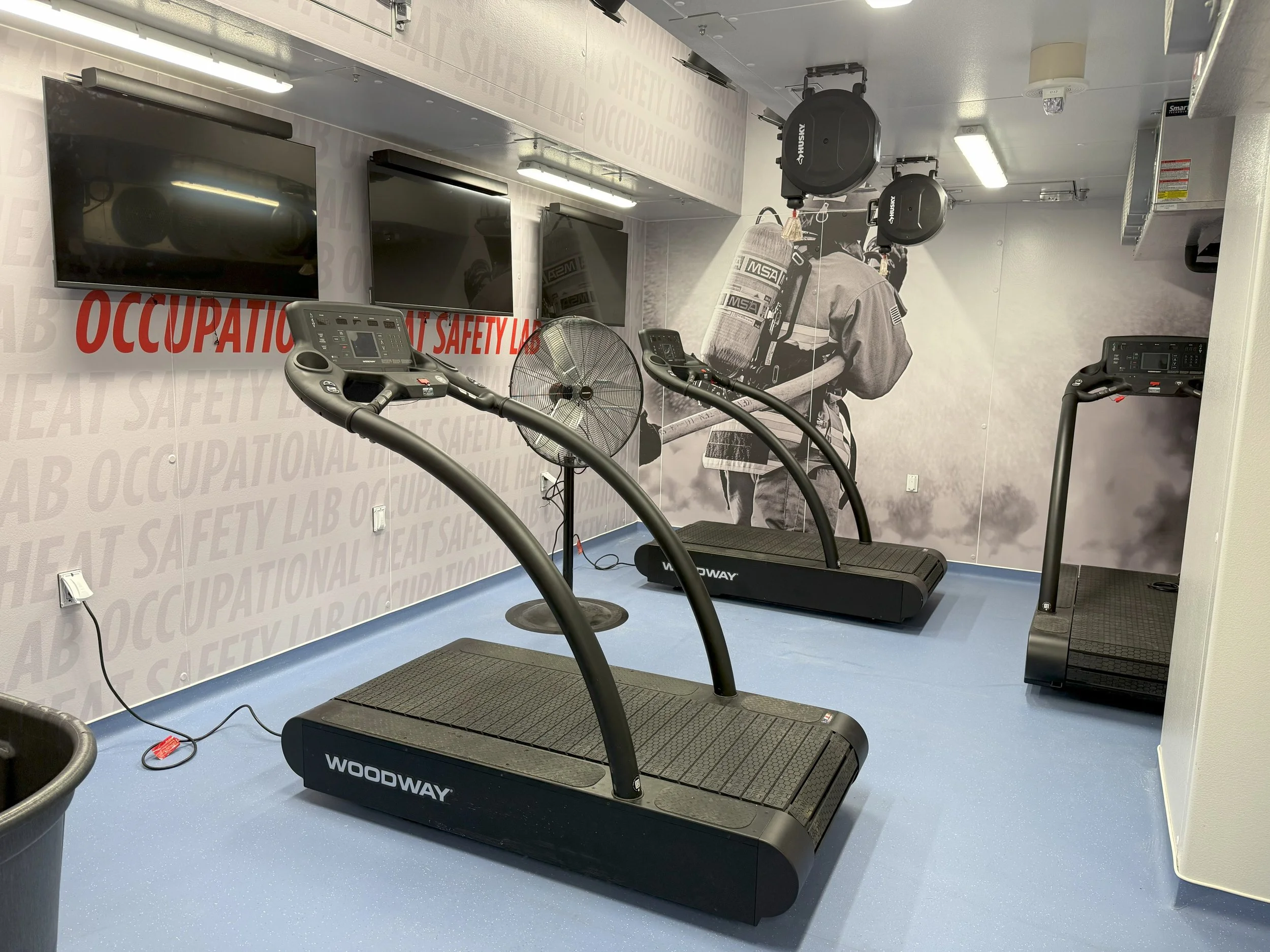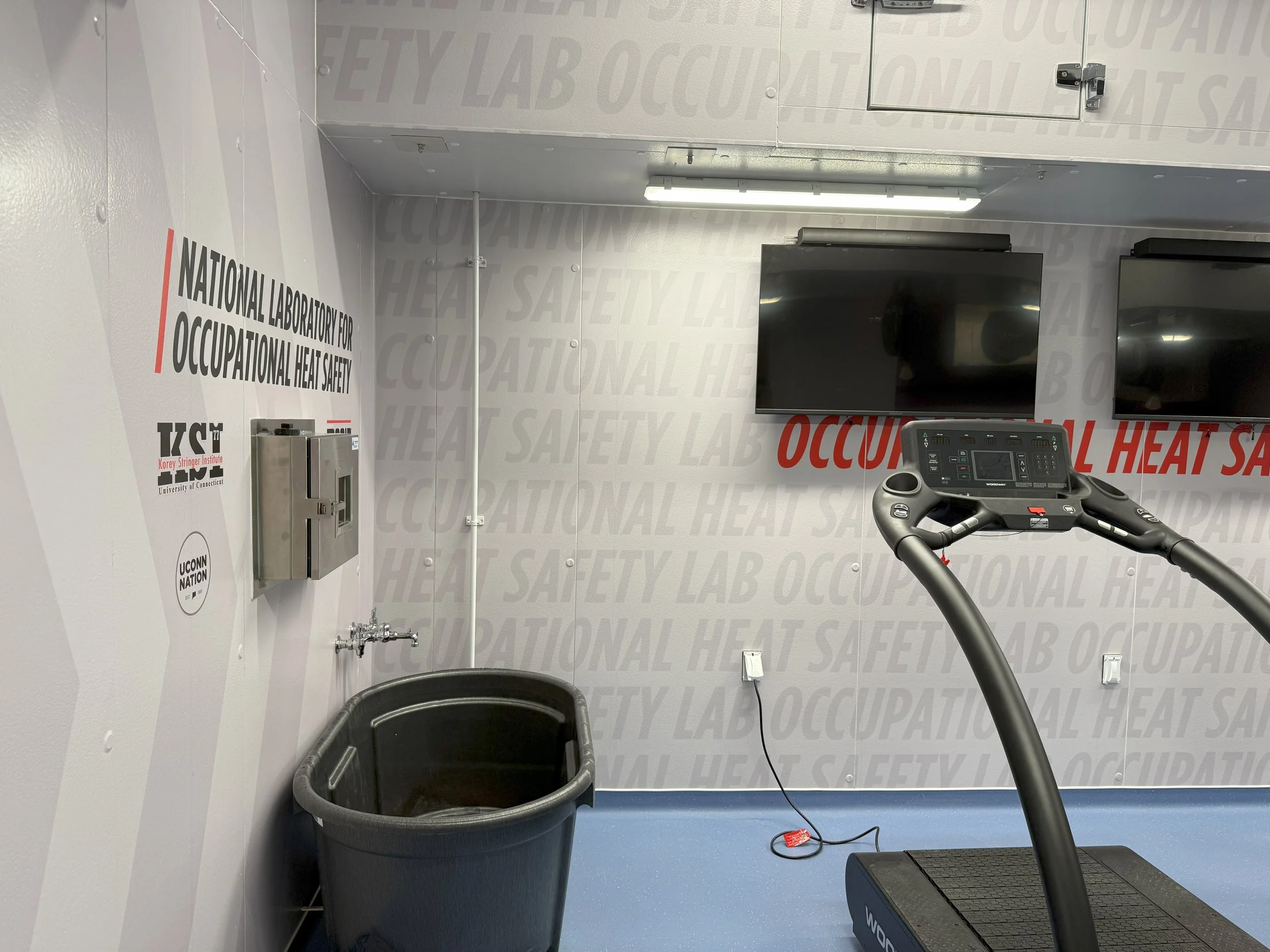Constructing a Lab for Extreme Conditions
The Korey Stringer Institute at UConn is expanding its $1 million lab to simulate heat, humidity, sunlight, wind, and—new for the first time—altitude, advancing research on how extreme environments affect the human body. Image: Courtesy of The Korey Stringer Institute
The Korey Stringer Institute (KSI) at the University of Connecticut completed a $1 million expansion in September 2025 that will redefine how researchers study the impact of extreme environmental conditions on the human body. The new laboratory will allow researchers to simulate a broad range of environmental stressors—heat, humidity, sunlight, wind, and now, for the first time, altitude—all in one highly controlled facility.
Unlike traditional lab projects that follow well-established templates, the KSI expansion required the team to forge their own path. “You just have to be flexible and be willing to pivot,” says Douglas Casa, PhD, ATC, FACSM, FNATA, FNAK, board of trustees distinguished professor and chief executive officer of the Korey Stringer Institute. “Nothing’s going to turn out the way you think it’s going to turn out. You have to remember that facilities like this are just very niche.”
Expanding capabilities to match demand
Founded in 2010 to honor former NFL player Korey Stringer, who died of heatstroke during training camp, KSI has grown far beyond its original athletic focus. The lab now partners with military organizations, industrial employers, and safety gear manufacturers to understand how heat and other conditions impact people working in challenging environments.
The institute’s existing facility was operating at full capacity, prompting the need for a second space. “We just got so busy we literally needed a second laboratory space,” Casa says. “The volume was too much for one facility because of the expanding interest related to heat safety for laborers, war fighters, and athletes.”
A sophisticated climate control system—“the box”—along with climate-controlled entryways and an internal bathroom, allows the lab to maintain precise environmental conditions for extended human testing. Image: Courtesy of The Korey Stringer Institute
The expanded lab builds on the capabilities of its predecessor. The original lab could simulate conditions from –20°F to 120°F, with humidity ranging from 20 to 90 percent, wind speeds up to 20 mph, and radiant heat through artificial sunlight. The new facility adds altitude to the mix—up to 12,000 feet—making it potentially the first university-based lab in the US to combine heat and altitude stressors.
Designing for precision and practicality
While specialized environmental controls are the centerpiece of the lab, the infrastructure was designed with equal attention to usability. “We can recreate almost any environment that a worker, a soldier, or an athlete would face,” says Casa. “Recreating those environments will then allow us to test cooling technologies, wearable technologies, hydration strategies, heat acclimatization strategies, different textiles or equipment or clothing that they’ll be wearing. By recreating the actual work situation, then the mitigation strategies are more relevant.”
A major portion of the facility cost went toward the sophisticated climate control system—what Casa describes as “the box”—capable of regulating temperature, humidity, solar radiation, wind, and oxygen concentration. But smaller design details were just as critical. For instance, the lab includes a climate-controlled vestibule to prevent environmental disruption when entering or exiting the chamber. It also includes a climate-controlled bathroom inside the lab space so test subjects don’t break environmental exposure during long experiments.
The KSI lab’s design drew primarily on internal expertise, staff input, and selective inspiration from other facilities, creating a unique, custom-built environment tailored to UConn’s research needs. Image: Courtesy of The Korey Stringer Institute
“We have a much higher ceiling now inside this facility … four or five feet higher,” Casa adds, noting the importance of vertical clearance for testing taller individuals and equipment like inclined treadmills. Ceiling-mounted electrical outlets eliminate floor clutter, keeping the space safer and more adaptable.
Designing when there’s no precedent
Rather than relying on outside lab planning experts or peer institutions, the design process was largely driven by internal knowledge and experience. The team held planning meetings where staff could submit their wish lists based on the limitations they encountered in the original lab. “We asked staff to write down things that they’re seeing in their existing heat lab, that they’re working in every day, that they’d want to see different in the next one,” Casa says. “We tried to do as many as we could.”
Constructing KSI’s specialized lab required creative problem-solving, from coordinating subcontractors new to heat-lab projects to reconfiguring space—including borrowing part of the athletics locker room—to accommodate the altitude simulation system. Image: Courtesy of The Korey Stringer Institute
Lessons also came from unexpected sources. Casa toured other facilities—including military labs and the new Gatorade Sports Science Institute in upstate New York—and pulled ideas that could be adapted to UConn’s unique goals. To Casa’s knowledge, there aren’t any other academic facilities quite like KSI, so the team had to piece together inspiration from a range of environments. “It was more of like a hodgepodge of different things that we liked and admired in other facilities, but not a specific duplication of one,” he says.
A collaborative effort across campus and industry
Executing a lab this specialized came with its share of construction complexities. While UConn provided the project manager, most subcontractors were third-party vendors used to more conventional research projects. “Every subcontractor was probably building their first heat lab,” says Casa.
The expanded KSI facility will enhance not only research but also client services and field programs, supporting athlete testing, heat illness recovery, wearable sensor trials, and emergency response training. Image: Courtesy of The Korey Stringer Institute
One significant obstacle involved the altitude simulation system. Only after the equipment was ordered did the team learn it needed a dedicated mechanical space within 50 feet of the main lab—space that wasn’t initially accounted for. The KSI facility is located inside the same complex where the university’s basketball teams train and competes, so “we basically had to steal a portion of Athletics’ locker room,” Casa jokes, crediting the cooperation of UConn Athletics for helping them pivot.
Despite such challenges, Casa described the collaboration among contractors, campus facilities teams, and KSI staff as exceptionally strong. “The people are phenomenal,” he says. “We have a university manager of facilities who’s phenomenal here, who would be constantly checking in. And then we had a project manager specific to this project who was running all the point people, and he was always keeping us updated.”
While UConn provided funding for the construction, the expansion was also made possible by corporate support. Cooling gear manufacturer Mission and safety equipment company Magid earned naming rights through their financial contributions. The institute continues to self-fund its operations through research partnerships and grants, many of which had to be turned away previously due to space constraints.
The KSI expansion exemplifies tailored lab design, combining collaboration, iteration, and staff-driven expertise to create a first-of-its-kind facility advancing heat stress research. Image: Courtesy of The Korey Stringer Institute
Beyond its research role, the new facility will support KSI’s client services and mobile response programs. The institute regularly tests athletes, laborers, and recovering heat illness patients, and conducts fieldwork with organizations like the military or event safety teams. Wearable sensor trials, cooling gear evaluations, and heat emergency response training are all in KSI’s broader portfolio.
As the KSI team readies the lab for its grand opening, the project emerges as a compelling example of customized lab planning—marked by collaboration, iteration, and adaptability. Without a clear precedent to guide them, Casa and his colleagues shaped a facility that advances the science of heat stress through a design deeply informed by real-world use and staff expertise. Their process offers valuable insights for others tackling highly specialized, first-of-their-kind laboratory builds.






